|
History Webpage format
(underdev.)
History
of
Beckenham Place Park (pdf)
A
History of Beckenham (pdf)
Buildings
Interior
Plaster
Decor
Interpretation
Nature Trail
Gardens
Pictures
Sensory Garden
Woodland
Ancient Trees
Meadows
Riverside
Wildlife
Golf Course
Brochures and Guides
Newsletters Archive
Visitor Centre
|
Buildings History
Nature
Trail
Sensory Garden
Gardens
Woodland
Meadows
Riverside
Wildlife
Golf Course
(last
edit January 2023)
This
page gives a brief timeline of the main events in the evolution of
Beckenham Place Park. Fuller histories of the Park
and Beckenham
generally are in the History Webpage and pdf documents via the links
here and in the column to the left.
Beckenham
Place Park was the
nucleus of a park and farmland estate from the 18th century.
Today it covers around 240 acres or 90 hectares. Its life as
a
public park began in 1927 when the London County Council foresaw a need
for open space to cater for the new estates of Bellingham and Downman.
The land was bought from the Cator Estate for about
£47,000 and
opened as a public park in 1929.
The park consists of historic English Heritage listed
buildings,
the Friends of Beckenham Place Park Visitor Centre was closed in 2020,
it had been run by the Friends
of BPP on Sunday afternoons (see
page), 60 acres of ancient woodland,
large areas of grassland managed as meadow or recreation ground, two
childrens
play areas, formal gardens, a sensory wildlife garden, a riverside
walk, a
reconstructed lake and an ancient pond, two cafe's, a nature
trail and various natural habitat areas which qualify its status as a
local nature reserve.
The public 18 hole golf course was closed by the Lewisham Local
Authority in 2016. The mansion is leased to RJK properties who
accommodate various activities.
The
history of the park is complex in its detail but in brief, John Cator
began to purchase land in and around the park area as early as 1757, He
had
the house built commenced in the spring of 1760 which we now call the
Mansion and engaged in further land
purchases
and exchanges until he owned most of the area north of Beckenham town
centre and elsewhere in Kent, Surrey and Essex. After he died in 1806
his heirs kept the park as a base but
began to lease land for development after a private act of Parliament
in 1825 which changed the terms of John Cator's will.
By the time the LCC bought
the park it was the only remnant of the Cator estates in Beckenham. The
family still own considerable land holdings in Norfolk.
More
information available on this site under history links.
Latest
additions:
The History page is
updated regularly and
has a
fuller account of past events. We are still discovering new facts and
we now
host a page on Beckenham generally, its landlords, estates and history.
Pat
Manning's book THE CATORS
OF
BECKENHAM AND WOODBASTWICK.
Describes the rise of the family of Quaker John Cator the elder from
Ross on Wye
to his son's (John Cator the younger) financial success in London and
acceptance into
the world of the landed gentry (1638-2002). Pat has kindly given
permission for her book in pdf file format to be reproduced here.
A piece
describing the mansion plasterwork
motifs by David Love (in buildings).
Timeline
of the park's evolution:
Park related events
1728 - John Cator the younger is born in Southwark on 12th March
1753 - John Cator of Southwark marries Mary Collinson, daughter of
Peter Collinson FRS, merchant and botanist
1757 - John Cator buys property at Southend, Lewisham and Foxgrove
Manor land in Beckenham
1760 - Cator exchanges land near Langley with the Burrells and Raymonds
for part of Foxgrove Manor.
1760 - 1762 Cator builds the house on Stumps Hill as per Peter
Collinson's comment in Hortus
Collinsonianus
1763
- a daughter Maria born to John and Mary Cator, John's
father
dies,
John inherits the family timber business.
1766 - The daughter Maria dies in infancy, John's sister also dies
after a long illness.
1772/80 - John Cator is MP for Wallingford
1773
- John purchases the Manor of Beckenham from Lord Bolingbroke who had
inherited the Manor earlier in 1765. But Bolingbroke had already leased
it to
Mrs Margaret Hare (see 1780). Little or nothing of Beckenham Manor is
in the park. Bolingbroke had disposed of the old manor house in
Beckenham in 1759 in an exchange with Peter Burrell.
1777
- parts of the 'park' next to the house in the manor of Foxgrove still
owned by Mrs Amy Burrell. John acquires them in a land exchange.
1778 - Beckenham Place is recorded in Hasted's History of
Kent
but not entirely accurately. A print shows a lake.
1780
- Cator agrees to compensate Mrs Margaret Hare for her rights to rents
from Beckenham Manor so that he acquires full ownership of Beckenham
Manor, and I suspect parts of Foxgrove Manor in the park which had been
in the name of Bolingbroke.
1784 - Cator elected MP for Ipswich but unseated
1785 - New road built
Beckenham Hill Road
to divert traffic around Cator's park. The road through
the park becomes Cator's drive. Another road closed to
facilitate
Cator's lake construction. Perhaps the lake or a smaller one
predated 1785.
1790/93 - Cator elected MP for Stockbridge
1793 - more land exchanges with the Burrells completes Cator's
ownership of this part of Beckenham and Lewisham.
1804 - Mary Cator dies and is buried in St. Georges churchyard with her
daughter.
1806
- John Cator dies at his appartment in the Adelphi near The Strand, is
buried in St Georges churchyard, Beckenham with family.
1806 - John Barwell Cator, son of John's oldest brother Joseph,
inherits the estate with other trustees.
1808
- John Barwell Cator marries Miss Mahon, niece of Lord Vigo. A relative
Lambert has access
to Barwell's papers inherited from Peter Collinson via John Cator.
1825 - A Private Act of Parliament allows the Cators to sell
or
lease the estate for reinvestment elsewhere ie Woodbastwick in Norfolk.
1829
- Alexander D. Inglis
occupies the Mansion followed by Peters (the leases did not always
include all of the current park, some of which was leased to nearby
Foxgrove Farm tenand which was also owned by the Cators).
1835
- Mr Peters.
a banker. Peters
was
succeeded by
Captain Walter Raleigh Gilbert, R.H.A. who had married Peter's
daughter, no dates available.
1838
- Tithe map and returns for Beckenham show that the Cator family owned
about one third of the land in Beckenham under various tenants. Peters
is the official tenant.
1841 and 1851 - the Census shows Peters in occupation.
1866
- Occupier is given as
Robert Henry Page
Esq.
1869
- Sir
John Kirkland, Bart. J.P. an army agent who had good
relations
with Queen Victoria and Prince Albert, received gifts from them. A
lease valid until 1881 is under Kirkland's name.
1870
ditto. Sir John dies in 1871
1871 John Kirkland Jnr. son of Sir John in census with son, aunt and
servants
1873
No
one listed as in occupation. Possibly the Kirkland lease had been
surrendered.
1874‑6
John Fell Christie.
1877‑8
No one listed as in
occupation.
1879 Spencer
Brunton. the Brunton children made a Christmas card depicting a royal
family visit, maybe this harks back to the Kirkland residency.
1880‑84
No one listed as
in occupation.
1885‑91
Edwin Covell, proprietor of butcher's shops.(directory and census
records)
1894
The occupier is
listed as Mrs Covell,
her husband Edwin has presumably
recently died. Edwin Covell is also recorded as the tenant in the
documents
concerned with the authorisation of the construction of the Shortlands
Nunhead
railway through the estate.
1895‑99
No one listed as
in occupation.
1902
Beckenham Place is
listed as Craven
College
1907
to 1930 Norwood Sanatorium occupies the mansion and Homesteads, seems
much of the park used by Foxgrove Golf Club, all under lease from Cator
Estate, and a new chapter in its history opens.
1907 - The Foxgrove Golf Club is established on the grounds of the
estate
1927 - The LCC acquires the park from the Cator Estate
1933 - The Golf Course becomes public and one time the busiest in
Europe
1939/45 - Crab Hill within the park is made a Prisoner of War camp for
Italian POW's
1972 - The park passes from the GLC to the ownership of London Borough
of Lewisham.
The Park and other open space is
designated
Metropolitan Open Land, a form of inner city Green Belt
1992
- David Lloyd Leisure attempted acquisition of much of the park, public
enquiry and rejection of plans to extend golf and add indoor tennis
centre.
Stable block homesteads and other cottages made vacant, park staff
housed elsewhere. Dereliction of this site begins.
1994 - First Friends visitor centre created in a part of the stable
block partially restoring one cottage.
1999 - Park undergoes some changes of manager, consultations to find
uses for the mansion,
2011 - Neglect of Stable Block leads to vandalism and fire, heritage
features such as clock tower destroyed.
2013 - Lewisham Council decide to seed Heritage Lottery Funding under
Parks for People scheme.
2016 - Mayor of Lewisham decides closure of Public Golf course, Council
unable to find a way to make it financially viable.
2016
- RJK Properties take a 22 month lease to manage the mansion.
HLF
approve funding to restore elements of the parkland and stable block.
Attempts made to reopen the golf course by a campaign group.
2018 - work begins on 'restoration' |
World
Events
1722
Afghans conquered Iran
1740-41 Famine in Ireland
1745
Jacobite uprising, Bonny Prince Charlie
1754 - 63 7 Years War with France
1755 the Lisbon Earthquake
1766 also recorded as a year with high smallpox related deaths
1769 James Cook's first voyage to Australia and New Zealand
1776 American Declaration of Independance
1789 French Revolution leading into Napoleonic Wars
1805 Battle of Trafalgar, Nelson killed.
1814 Battle of Waterloo, Napoleon defeated and exiled to St. Helena
1851 Great Exhibition in Hyde Park,
1854 Crystal Palace re-erected on Sydenham Hill
1857 Indian Rebellion
1858 India under Crown Control
1899 - 1902 Boer War
1904-5 Russo-Japanese War
1914-18 The Great War
1939-45 Second World War
Inauguration of Friends of Beckenham Place Park |
|
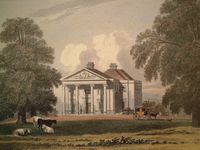
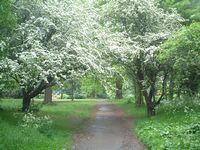
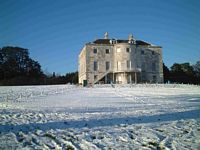
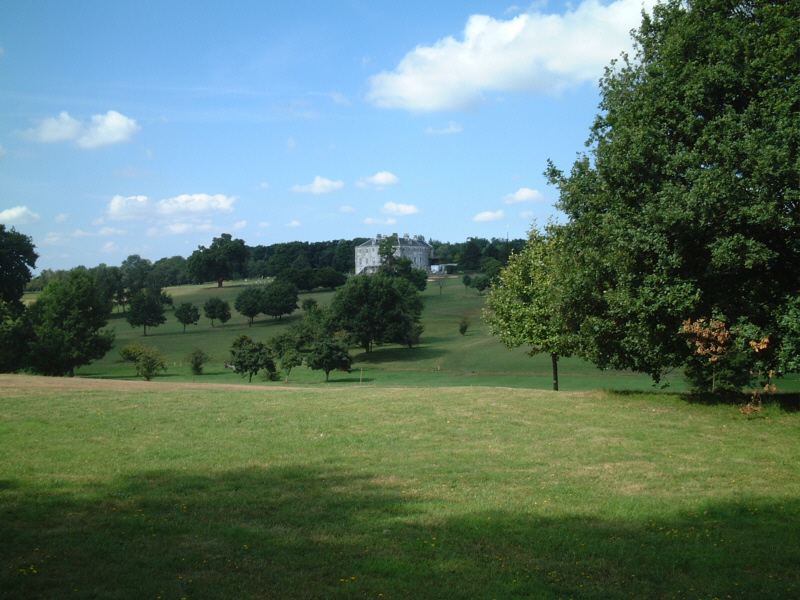
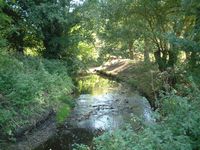

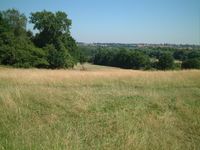
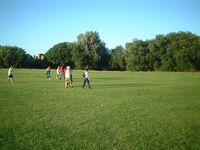 |






